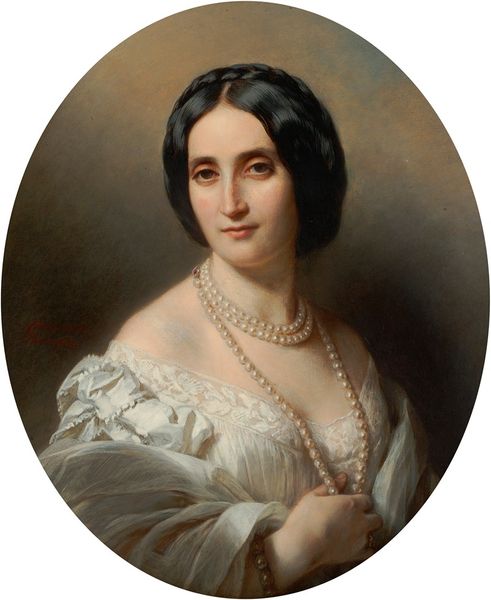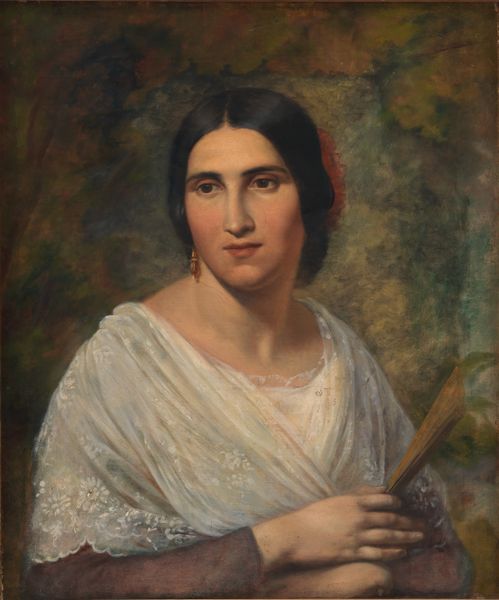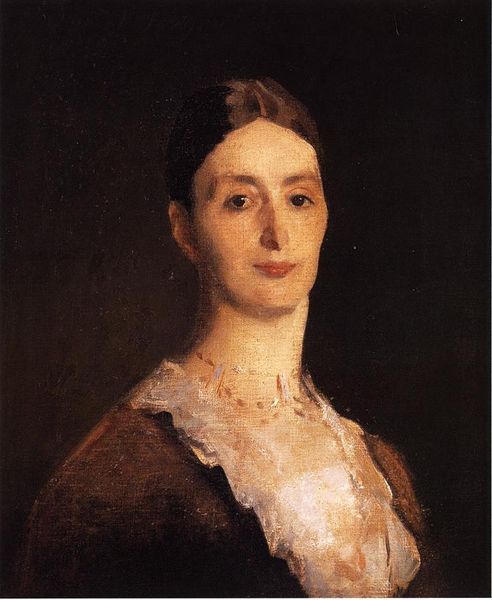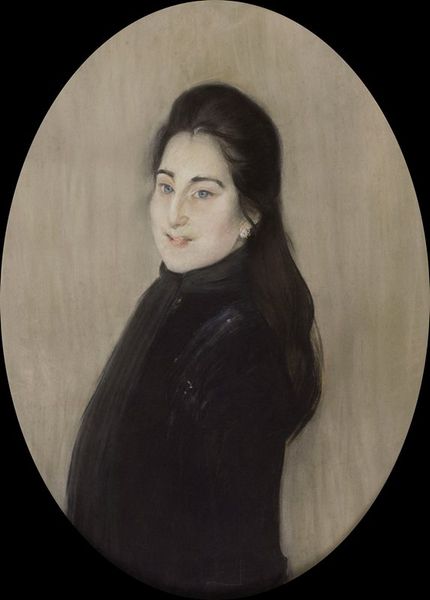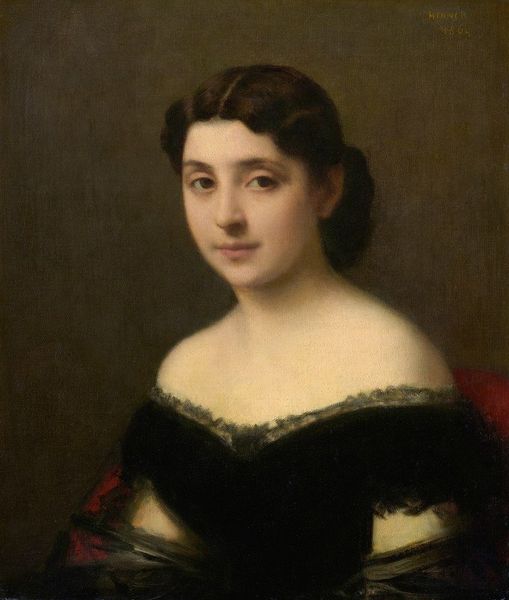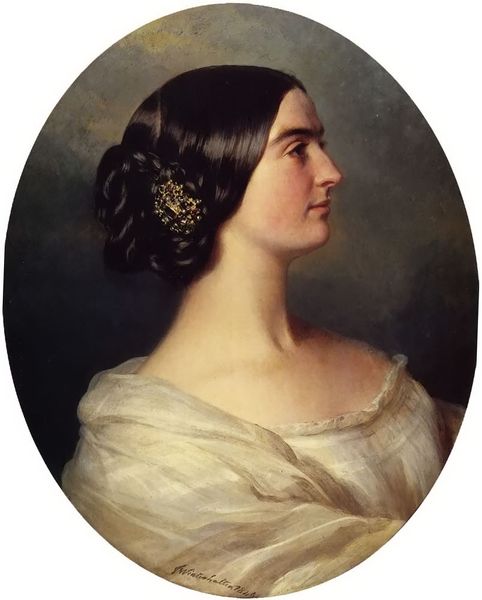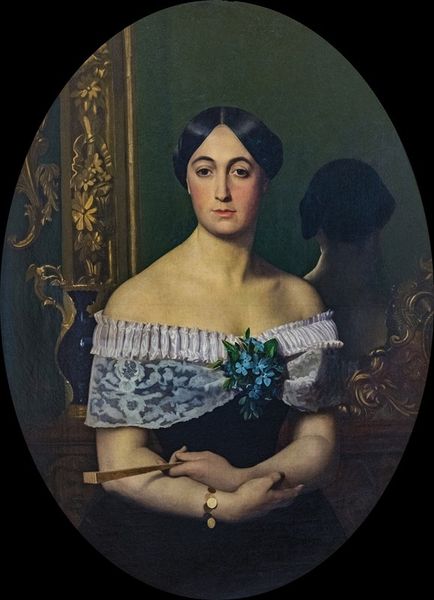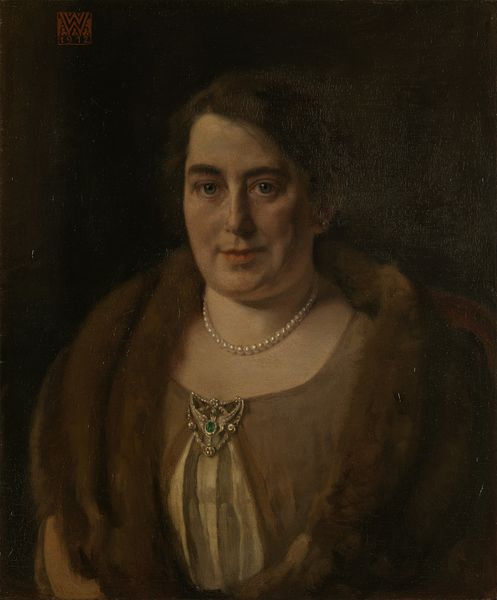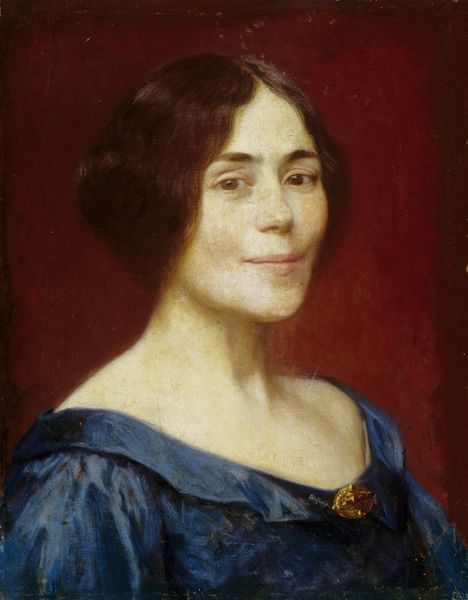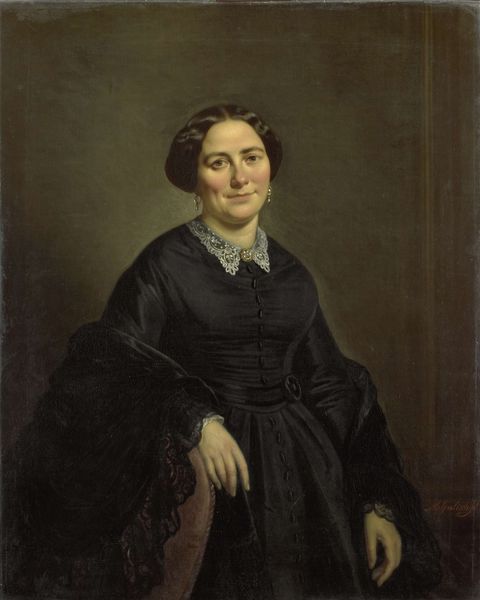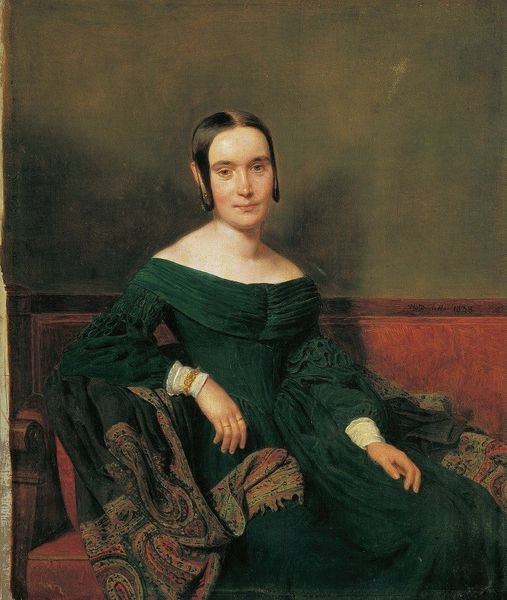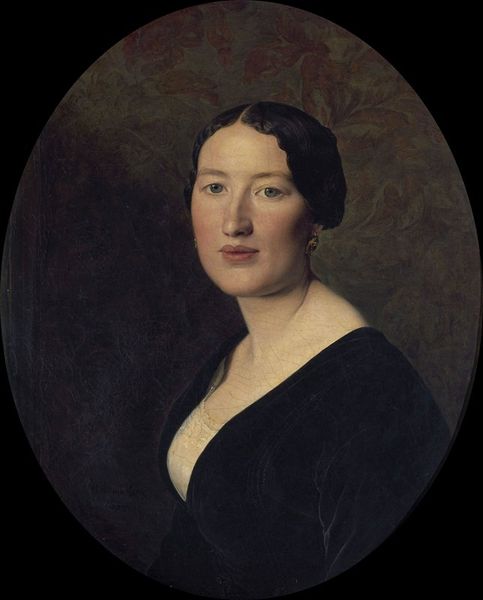
painting, oil-paint
#
portrait
#
painting
#
oil-paint
#
portrait drawing
#
history-painting
#
academic-art
#
portrait art
#
realism
Dimensions: 81 x 55.9 cm
Copyright: Public domain
Editor: Here we have "A Portrait of Amelina Dufaud," painted by William Bouguereau around 1850. It’s oil on, well, something – likely canvas. It feels like a very straightforward portrait. What do you see when you look at this piece? Curator: I see a very deliberate exercise in presenting bourgeois values through careful material construction. Consider the oil paint itself - how was it prepared? Where were the pigments sourced? The sheen of the paint speaks to wealth and status, not only of the subject, but the consumer, as paintings become more mass produced and distributed to new markets. Editor: So, the paint itself is almost as important as who's being painted? Curator: Precisely. Think about the support, likely a commercially produced canvas; this isn't some unique commission on personally made materials, it's part of a broader industrial apparatus churning out images for a burgeoning middle class who seek to emulate the aristocracy. And observe the backdrop fabric. That pattern would likely have been mass-produced as well, and chosen very carefully to imply comfort, safety, good taste, social acceptability, which all contributed to the production and consumption practices that sustained burgeoning capitalism. The brooch may hold sentimental and familial importance but has high commodity value. Who made it? How accessible was this craft work? What materials? The act of commissioning the portrait becomes a performance of sorts, where Amelina Dufaud materially signals her place within a very specific social framework. Editor: That’s a really interesting way of thinking about it. I hadn't considered all the material layers that go into constructing that social meaning. Curator: It prompts questions. How is she supporting dressmakers and painters? What fabrics are her dresses made of, what jewelry does she possess, and how might the proliferation of factories be producing similar trinkets for broader consumption? Editor: I guess I always focused on the artistry and the person being represented, but I see that there's a whole economic and social system embedded in the materials themselves. Thanks for opening my eyes to that!
Comments
No comments
Be the first to comment and join the conversation on the ultimate creative platform.
